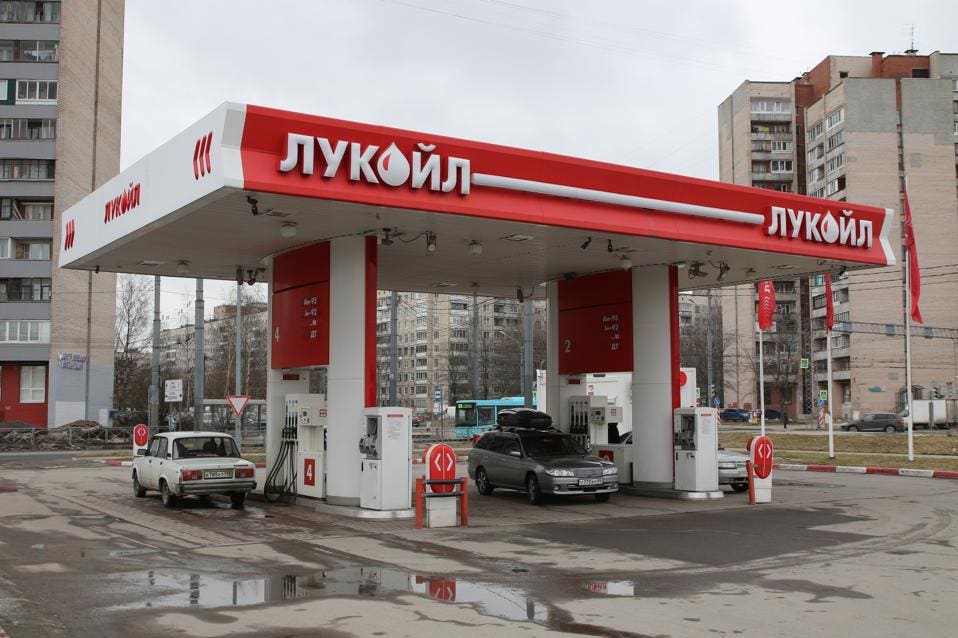Russia’s gas pumps are running dry, with stations rationing fuel or closing shop as Ukraine’s drone strikes rip through the country’s oil refineries. What began as scattered shortages in far-flung regions and occupied Crimea two weeks ago has exploded into a nationwide mess, hitting cities from Moscow to the Far East. Prices are through the roof, lines stretch for miles, and empty pumps are becoming a grim reality. With winter closing in, Russians are feeling the war’s sting not just at the front but in their daily lives.

For a public that’s largely tuned out Putin’s “special military operation,” this is a rude wake-up call. One blogger nailed it: “By year four, it’d be something if Ukraine’s energy is still standing while ours is toast.”
Moscow’s Spin: Everything’s Fine (Mostly)
Gas prices have shot up to $4.52 a gallon in some areas, more than double the $2.66 average from early September. But the real issue is supply or lack of it. Stations are limiting drivers to 5 gallons, some are switching to fleet-only fuel cards, and others have banned jerry cans to stop hoarding. In Crimea, half the stations are out of service, and the rest are diesel-only. Even school buses in Nizhny Novgorod were grounded last week, though local officials swore it was no big deal.

In Vanino, authorities blamed “routine maintenance” and panic buying, promising 180 tons of gas to hold people over until mid-October. “No real shortage,” said district head Alexey Maslov. “Just quit stocking up like it’s the end of the world.” Sure, that’ll ease the tension. Meanwhile, black market hustlers are cashing in.
Moscow’s fix? A blanket ban on gasoline exports through December and tight restrictions on diesel to keep fuel at home. Wholesale prices have jumped 40-50% since January, and production’s down about 10%.
Drones Doing Damage
Ukraine’s been relentless since August, hitting 16 of Russia’s 38 refineries and slashing 17% of capacity—about 1.1 million barrels a day. Big players like Afipsky (struck twice in a month, with a massive fire last week), Salavat, Kirishi, and Ryazan have taken hits. Ukraine’s Birds of Magyar drone squad is even taunting Moscow with “Refinery Grand Tour” videos, vowing to make fuel rarer than gold.

Russian state media downplays it, blaming “drone debris” for fires, but bloggers aren’t buying it. “Drones keep hitting the same spots?” one scoffed, pointing to repeat strikes in Bashkortostan. Theories are swirling: air defenses are spread thin, possibly out of ammo, or refinery bosses are letting chaos slide to inflate prices. One X post summed it up: “Shortages in 10 regions, Crimea’s stations half-dead—thanks, drones.” Another griped: “Moscow’s rationing 10-20 liters, diesel only in spots.”
The blame game is heatet air force, army, and locals are pointing fingers, with no one stepping up to fix it. Some bloggers, like Two Majors, are calling for a dedicated drone-defense agency or private security for refineries. “Capitalists, gear up those sky patrols,” they urge.

Ukraine’s Angle: Crippling the War Machine
Kyiv sees this as sweet revenge. The strikes have cut Russia’s refining capacity by up to 20% on rough days, clogging crude storage and forcing production cuts. Pipelines, ports, and gas plants are under fire too, pushing power stations to burn coal. Ukrainian commander Oleksandr Syrskyi said on September 25: “Russia’s got a fuel crisis, and their war machine’s feeling it.” President Zelenskyy called these strikes “sanctions that hit fast.”
Diesel exports are at a five-year low, and gasoline exports are banned. Shortages now grip 21 regions, from Chukotka to Samara. Crimea’s Sergei Aksyonov admitted some refineries are “physically kaput” but urged patience “until the operation’s done.”
Russia’s got moves import more fuel, tweak production, or lift price caps—but time’s running out. This isn’t just a fuel problem; it’s a test of how long Russians stay calm as the war hits home.




